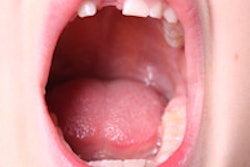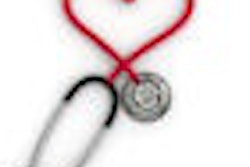
A physician, a nurse, and a dentist have joined forces to create a series of seminars aimed at getting dentists and physicians to better understand the need for a collaborative approach to screening patients at risk of heart disease, diabetes, and stroke.
When Brad Bale, MD; Amy Doneen, MSN, ARNP; and Tom Nabors, DDS, read the American Heart Association's (AHA) April article on periodontal disease and heart disease, they were compelled to draft a white paper addressing the AHA's conclusion that there is no evidence to support a causative relationship between the two conditions.
Dr. Bale and Doneen, developers of the Bale/Doneen method of cardiovascular disease (CVD) prevention, have long advocated the importance of using a systematic approach to reduce the incidence of CVD. They and Dr. Nabors, who founded OralDNA, worried that the AHA's conclusions could mislead the medical and dental communities, as well as the general public.
"There is indisputable, level A evidence that periodontal disease is independently associated with CVD risk, and the AHA paper certainly stated that," Dr. Bale told DrBicuspid.com.
In fact, given the science presented in the AHA article, coupled with the burden CVD places on society, "we cannot afford to wait for the acquisition of causality data to incorporate assessing and treating periodontal disease in an effort to minimize CVD risk," he, Dr. Nabors, and Doneen wrote in their white paper.
Now they are working to bring dentists and physicians together to promote collaborative care of patients at risk of CVD through a series of continuing education (CE) courses that emphasize the oral/systemic link and its impact on the risk of heart attacks, stroke, and diabetes. Their first seminar, "Vascular inflammation: The oral/systemic connection," will take place November 2 in Las Vegas.
"One of our goals is to bring dentists and physicians together in the new understanding of how inflammation works and why these two groups can influence systemic inflammation by reducing known biomarkers known to create high risk," Dr. Nabors told DrBicuspid.com. "Dentists and dental hygienists can be a significant influence of prevention or effective treatment in the oral connection to vascular inflammation."
Doneen and Dr. Bale already give similar courses to physicians, and two years ago began inviting dentists to attend as well, he noted.
"Our course is designed to spur collaboration between the dental and medical communities to help reduce the horrible morbidity and mortality of CVD," Dr. Bale said. "We have this level of evidence telling us that periodontal disease is independently associated with the risk of CVD, so any program designed to minimize that risk has to take into account perio disease. Which means we need to work out better ways for the two disciplines to interact and collaborate to get better results."
Doneen agreed.
"We know that if we want to reduce the occurrence, we need to learn how to bridge that gap," she said. "It is critical to disseminate the science behind the relationship [between CVD and perio disease] and get both sides to understand the link. "The dental community needs to know how to communicate with the medical community, and vice versa."
While many physicians may not fully understand periodontal disease and its causes and effects, they do understand clinical testing and see value in periodontal tests performed in conjunction with urine and other tests to determine a patient's risk of CVD, Dr. Nabors noted.
"What Dr. Bale and I spent the last decade doing is focusing on CVD, particularly prevention," Doneen said. "Our focus is on the health of the arterial system, which has huge systemic implications, and dentists play an important role in this, as do cardiologists and rheumatologists. The current system is focused on treating end-stage disease. What about backing up the train 20 years and realizing the body is developing issues and work together to help slow or even stop this process?"
The Bale/Doneen/Nabors courses are unique because they will focus on the information that both physicians and dentists need to understand in order to work together, such as the types of lab tests physicians typically used to evaluate CVD risk and the science behind the perio/heart disease link, Dr. Bale noted. There will also be mock patient visits to help medical providers understand their role in periodontal assessments and help dental providers understand how to communicate with patients and physicians about CVD risks.
If dentists are taught the right questions to ask and what to look for, and then relate that information to the patient and physician, they can become screeners for diabetes, heart disease, and stroke, Dr. Nabors added.
"That is a huge change in the potential level of responsibility that dentists can have for patient care," he said. "And in our opinion this couldn't be more exciting."



















